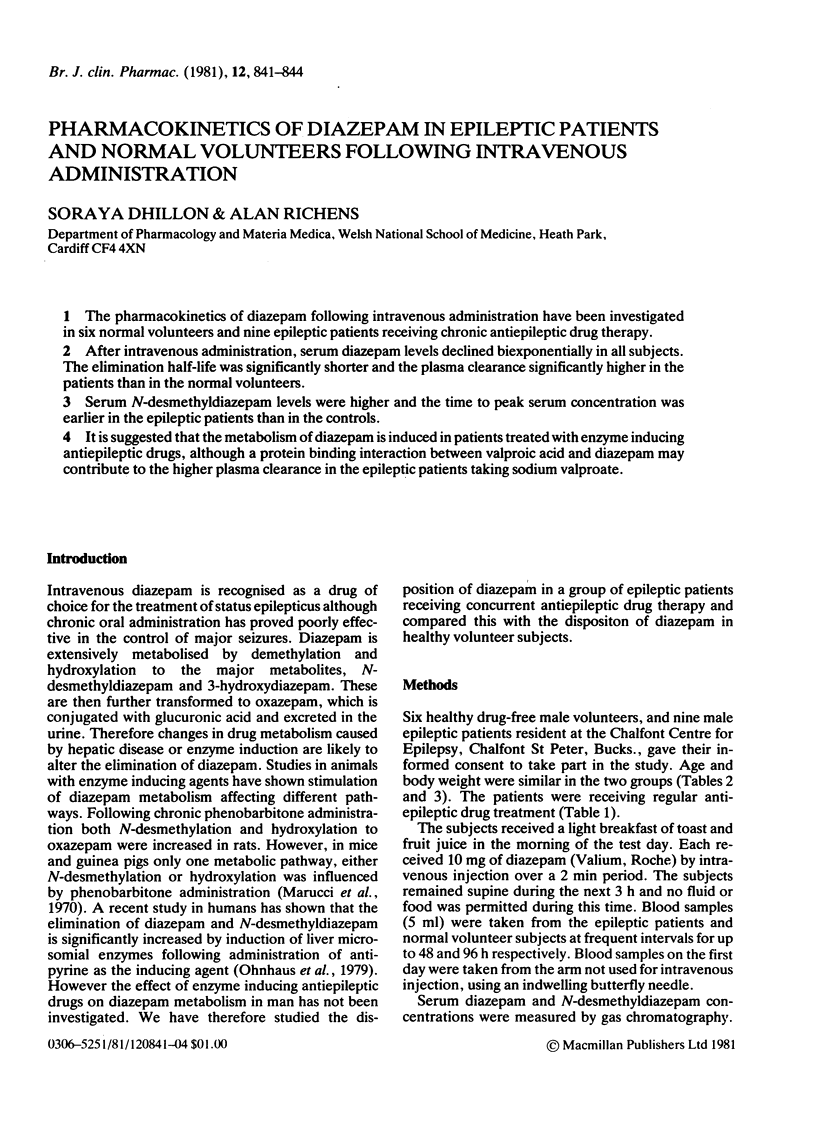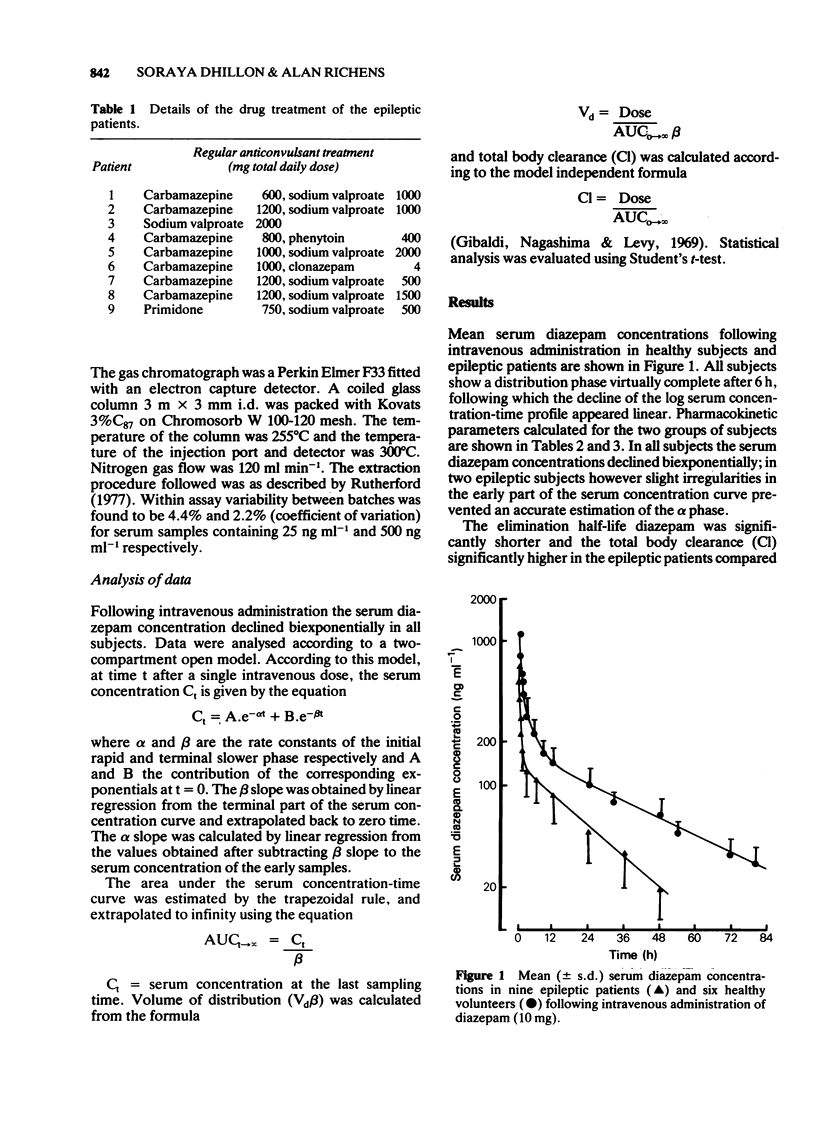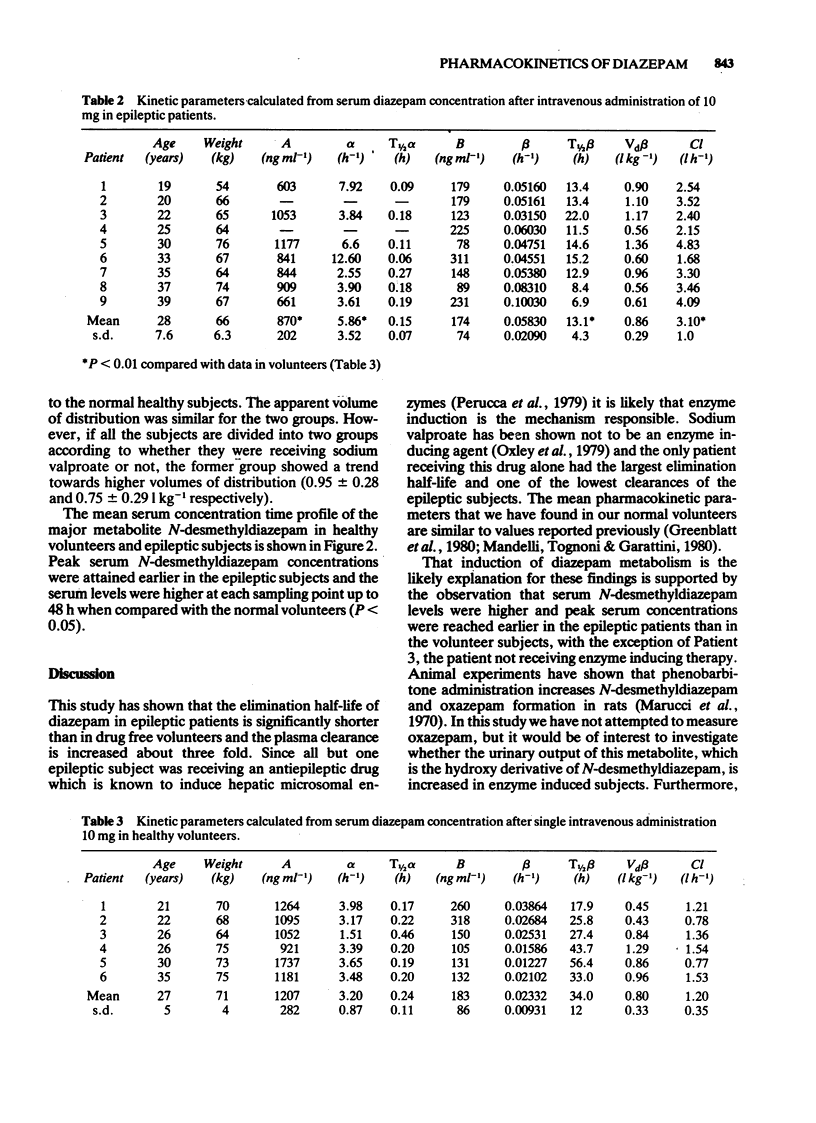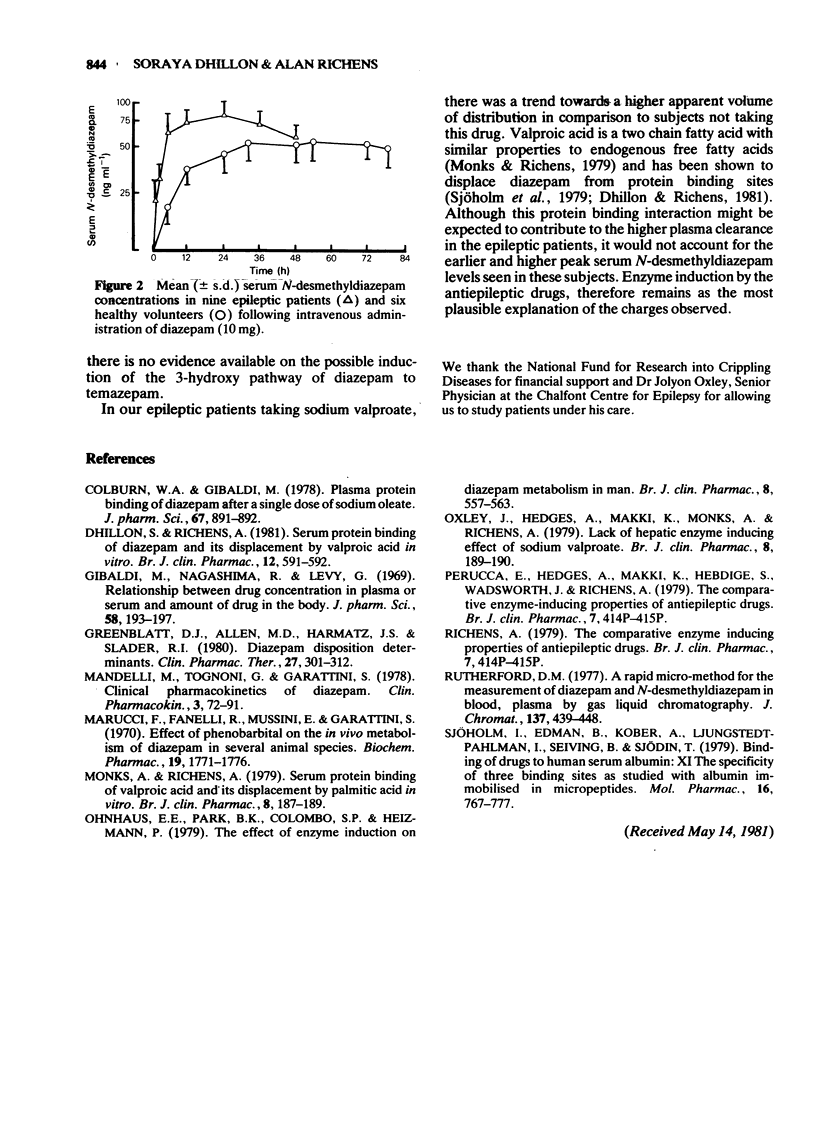Abstract
1 The pharmacokinetics of diazepam following intravenous administration have been investigated in six normal volunteers and nine epileptic patients receiving chronic antiepileptic drug therapy. 2 After intravenous administration, serum diazepam levels declined biexponentially in all subjects. The elimination half-life was significantly shorter and the plasma clearance significantly higher in the patients than in the normal volunteers. 3 Serum N-desmethyldiazepam levels were higher and the time to peak serum concentration was earlier in the epileptic patients than in the controls. 4 It is suggested that the metabolism of diazepam is induced in patients treated with enzyme inducing antiepileptic drugs, although a protein binding interaction between valproic acid and diazepam may contribute to the higher plasma clearance in the epileptic patients taking sodium valproate.
Full text
PDF



Selected References
These references are in PubMed. This may not be the complete list of references from this article.
- Colburn W. A., Gibaldi M. Plasma protein binding of diazepam after a single dose of sodium oleate. J Pharm Sci. 1978 Jun;67(6):891–892. doi: 10.1002/jps.2600670652. [DOI] [PubMed] [Google Scholar]
- Dhillon S., Richens A. Serum protein binding of diazepam and its displacement by valproic acid in vitro. Br J Clin Pharmacol. 1981 Oct;12(4):591–592. doi: 10.1111/j.1365-2125.1981.tb01273.x. [DOI] [PMC free article] [PubMed] [Google Scholar]
- Greenblatt D. J., Allen M. D., Harmatz J. S., Shader R. I. Diazepam disposition determinants. Clin Pharmacol Ther. 1980 Mar;27(3):301–312. doi: 10.1038/clpt.1980.40. [DOI] [PubMed] [Google Scholar]
- Mandelli M., Tognoni G., Garattini S. Clinical pharmacokinetics of diazepam. Clin Pharmacokinet. 1978 Jan-Feb;3(1):72–91. doi: 10.2165/00003088-197803010-00005. [DOI] [PubMed] [Google Scholar]
- Marcucci F., Fanelli R., Mussini E., Garattini S. Effect of phenobarbital on the in vitro metabolism of diazepam in several animal species. Biochem Pharmacol. 1970 May;19(5):1771–1776. doi: 10.1016/0006-2952(70)90169-3. [DOI] [PubMed] [Google Scholar]
- Monks A., Richens A. Serum protein binding of valproic acid and its displacement by palmitic acid in vitro. Br J Clin Pharmacol. 1979 Aug;8(2):187–189. doi: 10.1111/j.1365-2125.1979.tb05820.x. [DOI] [PMC free article] [PubMed] [Google Scholar]
- Ohnhaus E. E., Park B. K., Colombo J. P., Heizmann P. The effect of enzyme induction on diazepam metabolism in man. Br J Clin Pharmacol. 1979 Dec;8(6):557–563. doi: 10.1111/j.1365-2125.1979.tb01044.x. [DOI] [PMC free article] [PubMed] [Google Scholar]
- Oxley J., Hedges A., Makki K. A., Monks A., Richens A. Lack of hepatic enzyme inducing effect of sodium valproate. Br J Clin Pharmacol. 1979 Aug;8(2):189–190. doi: 10.1111/j.1365-2125.1979.tb05821.x. [DOI] [PMC free article] [PubMed] [Google Scholar]
- Perucca E., Hedges A., Makki K., Hebdige S., Wadsworth J., Richens A. The comparative enzyme-inducing properties of antiepileptic drugs [proceedings]. Br J Clin Pharmacol. 1979 Apr;7(4):414P–415P. [PubMed] [Google Scholar]
- Rutherford D. M. Rapid micro-method for the measurement of diazepam and desmethyldiazepam in blood plasma by gas-liquid chromatography. J Chromatogr. 1977 Jul 21;137(2):439–448. doi: 10.1016/s0021-9673(00)81366-7. [DOI] [PubMed] [Google Scholar]
- Sjöholm I., Ekman B., Kober A., Ljungstedt-Påhlman I., Seiving B., Sjödin T. Binding of drugs to human serum albumin:XI. The specificity of three binding sites as studied with albumin immobilized in microparticles. Mol Pharmacol. 1979 Nov;16(3):767–777. [PubMed] [Google Scholar]


